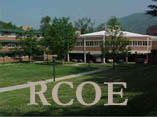Artifact # 11
A Literature Circle Unit is an interdisciplinary unit in which students are divided and grouped based upon their instructional reading level. The entire class will study the same topic, however, the students will be reading from different books. Each book will be divided up into sections. Next, the teacher will assign each student a specific job to complete and to share within their group. From this, each child takes responsibility for their own learning. After each section is read, the groups will meet together and discuss their jobs with one another.
Rationale for Artifact Eleven: Literature Circle Unit
Competency 10.3: "Access resources for planning instruction available via telecommunications (e.g., experts, lesson plans, authentic data, curriculum materials)."
Competency 12.5: "Organizational and management strategies that support active student involvement, inquiry, and collaboration."
CONTEXT
I created this artifact during block of my senior at ASU. The unit was developed by using Netscape Composer to create a set of web pages. The web pages were divided up into four different grade levels (one above grade level, one at grade level, and two below grade level). This unit was developed for fifth grade and focuses on Pioneers of the American West. Each lesson within the unit focuses on the specified topic. This unit uses the historical fiction genre to expand on various ideas. Because the unit focuses on individual reading levels, the students become engaged in the same topic by reading various novels. My section was created for the on grade level students, which is fifth grade.
IMPACT
This Literature Circle Unit can be used in
both within both the Language Arts and Social Studies Curriculum.
It can be a very effective method to help students develop Reading and
Language Arts skills. The various, interchangeable roles provide
in-depth searches into the stories and characters. The purpose of
the Literature Circle Unit is to accommodate a wide range of instructional
and developmental reading levels, as well as diverse learning styles.
In this, students at all levels can experience success and improve their
own Reading, Writing, and Language Arts skills. This unit, Pioneers
of the American West, can be used as a model for other teachers to create
their own literature circle unit. It is outlined in specific sections
to show how each job is completed. There are also various examples/jobs
demonstrated within many sections of the unit, which can be used
inside a classroom.
ALIGNMENT
The literature circle unit aligns with Technology Competency 10.3 because the example can be found via the internet for other teachers to use within their own individual classrooms.
The artifact also aligns with Technology Competency 12.5 because this unit lets students organize materials they find within each section. Also, they must learn to manage their time so that they can complete each section to share with their collaborative group members.
The literature circle unit meets INTASC principle 1 . Through Literature Circles, students will benefit more from researching information, making predictions, and drawing conclusions on their own. It is extremely important for students to find information on their own to prove and support their individual opinions. Literature Circle Units allow children to do this as they refer back to the sections and search for the answers to their own questions. This learning becomes a product of their own work. Each child learns by actively teaching themselves to dig up information from the text to find the answers. This then makes the information more meaningful for them.
The literature circle unit also meets INTASC principle 4 . Literature circles provide instructional strategies for diverse learners’ needs. It is also an effective way to help children build and develop critical thinking skills, problem solving skills, and performance skills. By preparing their jobs to share with their groups and leading the group discussion, students act as the teacher.
The literature circle unit meets INTASC principle 6 because the teacher uses verbal, nonverbal, and media communication to teach the students how to complete literature circles. Theses units are a fantastic way to involve all students within the classroom.
